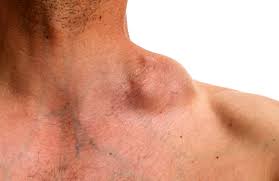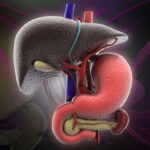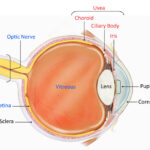Non-Hodgkin’s lymphoma (NHL) is a heterogeneous group of blood cancers that affect the lymphatic system, part of the body’s immune defense. Unlike Hodgkin’s lymphoma, NHL is defined by the absence of Reed-Sternberg cells and includes a wide variety of lymphoid malignancies arising from B-cells or T-cells.
NHL can manifest in lymph nodes, spleen, bone marrow, or extranodal tissues, progressing at varying speeds depending on the specific subtype. Understanding its complexities is crucial for timely diagnosis and treatment.

Classification of Non-Hodgkin’s Lymphoma
B-Cell Lymphomas
The majority of NHL cases—approximately 85%—originate from B lymphocytes. Key subtypes include:
- Diffuse Large B-Cell Lymphoma (DLBCL): The most common and aggressive form. Rapid onset, but potentially curable.
- Follicular Lymphoma: Indolent with a slow progression but prone to transformation into aggressive forms.
- Mantle Cell Lymphoma: Rare and aggressive; arises from the outer edge of a lymph node follicle.
- Burkitt Lymphoma: Highly aggressive with a fast proliferation rate, requiring urgent intervention.
- Chronic Lymphocytic Leukemia/Small Lymphocytic Lymphoma (CLL/SLL): Indolent B-cell malignancy with overlapping features between leukemia and lymphoma.
T-Cell and NK-Cell Lymphomas
These subtypes are less common but often more aggressive:
- Peripheral T-Cell Lymphoma (PTCL): A diverse group of mature T-cell malignancies.
- Anaplastic Large Cell Lymphoma (ALCL): Characterized by ALK-positive or ALK-negative expression.
- Cutaneous T-Cell Lymphoma (CTCL): Includes Mycosis Fungoides and Sézary syndrome, with primary skin involvement.
Symptoms of Non-Hodgkin’s Lymphoma
General Symptoms (B Symptoms)
- Unexplained fever
- Drenching night sweats
- Unintentional weight loss (>10% in 6 months)
Localized Symptoms
- Painless lymphadenopathy (swollen lymph nodes in neck, armpits, or groin)
- Abdominal pain or swelling (due to mesenteric node involvement)
- Chest pain or cough (mediastinal mass)
- Fatigue and frequent infections
In extranodal presentations, symptoms depend on the organ involved—such as CNS, skin, or gastrointestinal tract.
Causes and Risk Factors
Genetic and Immunological Factors
- Inherited immune deficiencies
- Autoimmune diseases (e.g., Sjögren’s syndrome, lupus)
- Family history of lymphoma
Environmental and Infectious Triggers
- Viral infections: Epstein-Barr virus (EBV), Human T-cell leukemia virus (HTLV-1), HIV
- Bacterial agents: Helicobacter pylori (associated with gastric MALT lymphoma)
- Chemical exposure: Pesticides, benzene, and radiation
Iatrogenic and Lifestyle Factors
- Organ transplant recipients on immunosuppressants
- Chemotherapy or radiation for previous cancers
Staging of Non-Hodgkin’s Lymphoma
Staging determines treatment strategy and prognosis. The Ann Arbor staging system is commonly used.
Stage I
- Involvement of a single lymph node region or a single extranodal site.
Stage II
- Involvement of two or more lymph node regions on the same side of the diaphragm.
Stage III
- Lymph nodes on both sides of the diaphragm are affected.
Stage IV
- Widespread involvement, including bone marrow, liver, or other extranodal organs.
Diagnostic Approach to Non-Hodgkin’s Lymphoma
Clinical Evaluation
- Physical examination of lymph nodes
- Assessment of systemic symptoms
Laboratory Tests
- Complete blood count (CBC)
- Lactate dehydrogenase (LDH) – often elevated
- HIV and hepatitis screening
Imaging
- CT, PET-CT, and MRI for anatomical and metabolic staging
Histopathological Examination
- Lymph node biopsy (excisional preferred)
- Immunohistochemistry and flow cytometry to determine subtype
Bone Marrow Biopsy
- For staging and marrow infiltration assessment
Treatment Options for Non-Hodgkin’s Lymphoma
Chemotherapy
- CHOP regimen (Cyclophosphamide, Doxorubicin, Vincristine, Prednisone) is the cornerstone for aggressive types.
- CVP or single-agent chemo for indolent types.
Targeted Therapy
- Rituximab (anti-CD20 monoclonal antibody) is standard for B-cell lymphomas.
- Brentuximab vedotin and CAR T-cell therapy for relapsed/refractory cases.
Radiation Therapy
- Used for localized disease or bulky masses.
Stem Cell Transplantation
- Autologous or allogeneic stem cell transplants may be considered in high-risk or relapsed cases.
Watchful Waiting
- For certain indolent lymphomas without significant symptoms or progression
Prognosis and Survival Rates
Prognosis varies by type, stage, and patient factors.
| Lymphoma Type | 5-Year Survival Rate |
|---|---|
| DLBCL | ~64% |
| Follicular | ~90% (early stage) |
| Burkitt | ~85% (with treatment) |
| Mantle Cell | ~50% |
| PTCL | ~30–50% |
The International Prognostic Index (IPI) is used to estimate risk based on age, stage, LDH level, performance status, and extranodal involvement.
Living with Non-Hodgkin’s Lymphoma
Survivorship and Monitoring
- Regular follow-up visits, imaging, and labs
- Long-term side effects: secondary malignancies, infertility, fatigue
Psychosocial Support
- Counseling and support groups help manage emotional impact
- Nutritional guidance and physical rehabilitation for enhanced quality of life

